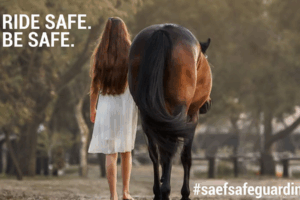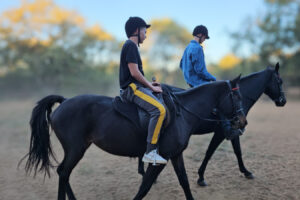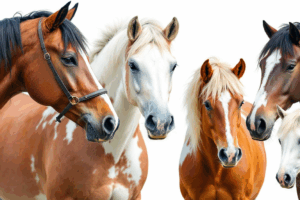By Charlene Carroll
South Africa’s climate is tough, and when drought or winter thins the grazing, poisonous plants are more likely to be eaten by hungry horses. Some are common garden ornamentals, others are hardy weeds that thrive along roadsides or creep unnoticed into hay bales.
A single mouthful of certain plants can be fatal, while others build up toxins over time. Knowing what to look out for in every season, from spring bulbs to autumn acorns, is one of the best safeguards you can give your horse.
With thanks to the South African Pony Club for sharing their poisonous plants resource, helping us all keep our horses safe.
Milkweed (Tontelbos)
Found in: Gauteng and Limpopo, often on roadsides and in veld or gardens.
A shrubby plant with long leaves and prickly green seed pods. The milky sap is highly toxic, attacking the heart and causing sudden collapse. Dangerous year-round, though more obvious when in fruit during late summer.
Morning Glory (Bind weed)
Found in: Across South Africa.
A fast-growing vine with trumpet-shaped blooms that twine around fences and hedges. While horses don’t graze it, the seeds can contaminate feed. In large amounts, they damage the liver and cause chronic ill health.
Wild Cucumber (Doring komkommer)
Found in: Gauteng and Limpopo, especially on road verges and veld.
Its hairy stems and yellow flowers produce spiny fruits that are extremely poisonous. Horses that ingest them may foam from the nose and show signs of poisoning. It’s more visible in spring and summer when fruiting.
Datura (Olieboom or Thorn Apple)
Found in: Most of South Africa, particularly near rivers and croplands.
Known for its moon-like trumpet flowers and spiky seed pods, this weed is avoided for its foul taste, but accidents happen. It can trigger impaction colic, hyperactivity, and even test positive as a banned substance in drug checks.
Bulb plants (Lilies and similar)
Found in: Common in gardens countrywide.
Any plant grown from a bulb can be hazardous. The bulbs themselves are deadly, while leaves and flowers cause diarrhoea. Because they sprout early in spring when grazing is scarce, horses may be tempted to eat them.
Oleander
Found in: Countrywide in gardens, though now illegal to plant.
An evergreen shrub with pink, red or white blossoms. Every part is poisonous and just a few leaves can cause abdominal pain, diarrhoea, lameness and rapid death. Horses tied near hedges in summer are especially at risk.
Ground Ivy
Found in: Gardens and lawns throughout South Africa, often creeping into hay.
While rarely eaten fresh, dried leaves can be ingested in feed. It causes digestive upset, dilated pupils, and heavy sweating. Symptoms usually appear in late winter and spring when pastures are bare.
Azalea/Rhododendron
Found in: Warmer escarpment areas, often in pots or gardens.
With showy pink or red spring flowers, azaleas look harmless but are deadly. Even a few leaves or nectar can cause salivation, weakness, colic and respiratory failure. The danger peaks in spring bloom.
Acorns
Found in: Under oak trees across South Africa.
While most horses ignore them, some develop a taste for fallen acorns in autumn. They contain tannic acid that damages the liver and kidneys, leading to dehydration, colic and even death.
Privet
Found in: Widely planted as hedges or borders.
An evergreen shrub with white flowers and black berries. Both leaves and fruit are toxic, causing gastrointestinal distress, convulsions and paralysis. Risk is highest in summer when berries ripen.
Hemlock
Found in: Native species in the Western Cape.
A tall parsley-like plant with white flower clusters and purple-spotted hollow stems. Extremely poisonous, and even a small amount can be fatal. Most common in late spring and summer.
Ragwort
Found in: Across South Africa, thriving as a hardy weed.
Golden daisy-like flowers make this plant look cheerful, but it causes irreversible liver damage. Horses may show staggering, jaundice, and abdominal pain. Danger increases in dry seasons when weeds outgrow the grass.

















